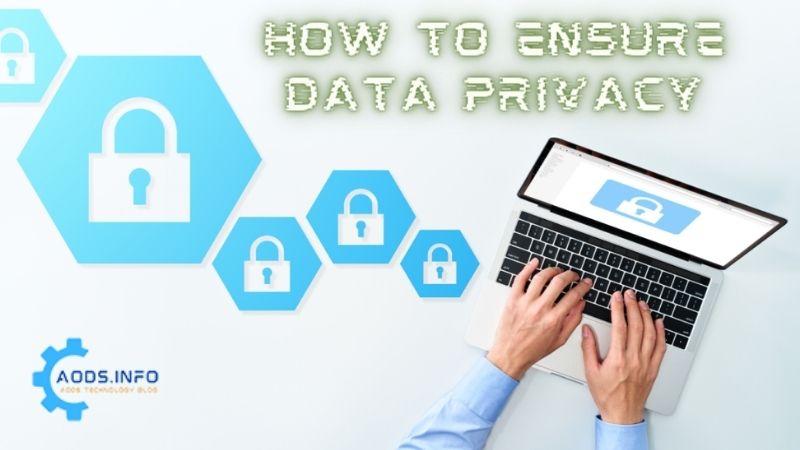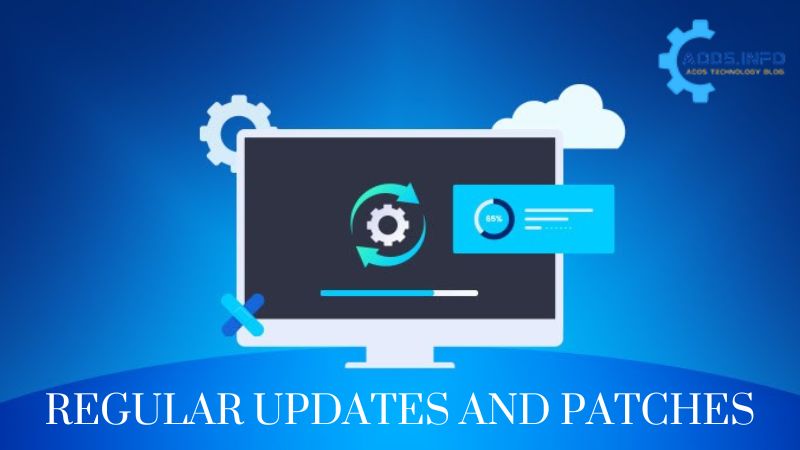In our contemporary digital landscape, the preservation of data privacy stands as an eminent concern for both individuals and organizations. With the rampant escalation of data breaches and cyber threats, the protection of sensitive information has ascended to a position of paramount importance. In this extensive guide, Aods shall delve into indispensable strategies elucidating how to ensure data privacy with utmost efficacy.
Contents
- 1 How to Ensure Data Privacy
- 1.1 1. Data Minimization:
- 1.2 2. Access Control:
- 1.3 3. Encryption:
- 1.4 4. Regular Updates and Patches:
- 1.5 5. Data Masking/Anonymization:
- 1.6 6. Privacy by Design:
- 1.7 7. Employee Training and Awareness:
- 1.8 8. Data Breach Response Plan:
- 1.9 9. Regular Audits and Assessments:
- 1.10 10. Compliance with Regulations:
- 1.11 11. Continuous Improvement:
- 2 Conclusion
How to Ensure Data Privacy
1. Data Minimization:
Starting with the fundamental principle of data minimization, it is crucial to limit the collection and retention of information to only what is necessary for operational needs. By reducing the amount of data stored, organizations can significantly reduce the risk of unauthorized access or misuse. This proactive approach not only enhances data security but also ensures compliance with privacy regulations by minimizing the exposure of sensitive information, thereby safeguarding individuals’ privacy rights.
2. Access Control:
Implementing robust access control mechanisms is essential for limiting access to sensitive data. By utilizing methods such as multifactor authentication and role-based access control, organizations can ensure that only authorized individuals gain entry to confidential information. Restricting access based on necessity enhances security measures by reducing the risk of unauthorized access or data breaches. This proactive approach strengthens overall data protection efforts and helps safeguard sensitive information from potential threats or unauthorized use.
3. Encryption:
Encryption plays a vital role in protecting data from unauthorized access, whether it is in transit or at rest. By utilizing strong encryption algorithms, organizations can encode data during transmission over networks and ensure that data stored on devices or servers remains encrypted. This proactive measure helps mitigate the risk of unauthorized intrusion and enhances overall data security. By implementing encryption protocols, organizations can bolster their defenses against cyber threats and safeguard sensitive information from potential breaches or compromises.
4. Regular Updates and Patches:
Regularly updating software and systems with the latest security patches is crucial for mitigating vulnerabilities that could be exploited by malicious actors. Ensuring the consistent installation of updates for operating systems, applications, and security software is essential to maintain the security posture of systems. This proactive approach helps safeguard against potential security breaches and cyberattacks by addressing known vulnerabilities and enhancing the overall resilience of software and systems against evolving threats in the digital landscape.
5. Data Masking/Anonymization:
In instances where data is shared for testing or analytical purposes, techniques such as data masking or anonymization serve to supplant sensitive information with plausible yet fictitious data. This stratagem facilitates the preservation of individual privacy while still facilitating meaningful analysis.
6. Privacy by Design:
Infusing privacy considerations into the very fabric of systems and processes from their inception epitomizes the ethos of privacy by design. By contemplating privacy implications at each juncture of the product lifecycle, organizations can proactively embed security into their products and services.
7. Employee Training and Awareness:
Nurturing employee proficiency in data privacy best practices and cultivating an appreciation for the significance of safeguarding sensitive information are pivotal endeavors. Periodic training sessions serve to inculcate awareness regarding potential threats and reinforce commendable security practices among staff members.
8. Data Breach Response Plan:
Developing a thorough data breach response plan outlining the steps to be taken in the event of a security breach is essential. This plan should include detailed procedures for promptly notifying affected individuals, relevant regulatory authorities, and other stakeholders. By having a comprehensive response strategy in place, organizations can ensure a swift and effective response to mitigate the impact of the breach, minimize potential damages, and uphold transparency and accountability in addressing data security incidents.
9. Regular Audits and Assessments:
Conducting regular audits and assessments concerning data handling practices, security controls, and adherence to privacy regulations is crucial. These activities aim to pinpoint any vulnerabilities or deficiencies that require attention, allowing organizations to take timely corrective measures. By systematically evaluating their data management processes and regulatory compliance status, companies can proactively enhance their data security posture and ensure ongoing alignment with evolving privacy standards, ultimately fostering trust and confidence among stakeholders.
10. Compliance with Regulations:
Ensuring compliance with relevant data protection regulations such as the General Data Protection Regulation (GDPR) or the California Consumer Privacy Act (CCPA) is paramount for organizations. Familiarizing oneself with the provisions of these regulations and instituting necessary measures to comply with them, which may include obtaining relevant certifications or implementing tailored privacy protocols, is essential to uphold data privacy standards and mitigate legal risks associated with non-compliance in today’s increasingly regulated digital landscape.
11. Continuous Improvement:
Data privacy is an ongoing effort that requires constant adjustment to address evolving threats and regulations. Regularly reviewing and updating data privacy policies and protocols is essential to ensure their effectiveness in mitigating risks and safeguarding the confidentiality of sensitive information in today’s dynamic and ever-changing digital landscape. By staying proactive and responsive to emerging challenges, organizations can uphold their commitment to maintaining the privacy and security of individuals’ personal data.
Conclusion
In summation, the preservation of data privacy entails a multifaceted approach, encompassing technical fortifications, organizational policies, and employee enlightenment. By embracing the eleven strategies delineated in this guide on how to ensure data privacy, individuals and organizations can efficaciously shield sensitive information, thereby mitigating the risk of unauthorized access or exploitation. By prioritizing data privacy, trust can be fostered with customers, partners, and stakeholders, engendering an environment conducive to the preservation of invaluable information.




